
20 Best Bathroom Faucet Brands 2025
Having trouble finding the right faucet brand for your home? With this comprehensive list, we will look at the most
Your bathroom is a place of peace and solitude, then one day, as you ready yourself for a relaxing bath, you notice a small crack in the center of your bathtub. While it may not be a cause of alarm, that small crack can lead to further problems if unaddressed.
Jump to a specific section:
There are three main reasons why cracks tend to form in, bathtub materials which is lack of support or if the material is flexible, damage from heavy objects and damage from heavy cleaners.
Some material such as fiberglass is highly flexible, meaning it will bend if weight it placed on it. If this sort of material is installed improperly or without additional support, overtime the weight pressure will cause cracks to form.
Cracks also tend to form when objects are dropped on the bathtub, creating small divots and dents that will eventually spiral out into much larger cracks and crevices over time.
Lastly, with highly abrasive cleaners such as bleach, the finish and gloss of the bathtub can easily be eroded away, allowing more moisture into the material, causing cracks. So why are cracks dangerous? Well, if ignored, even tiny cracks in your bathtub can eventually become much larger cracks down the road.
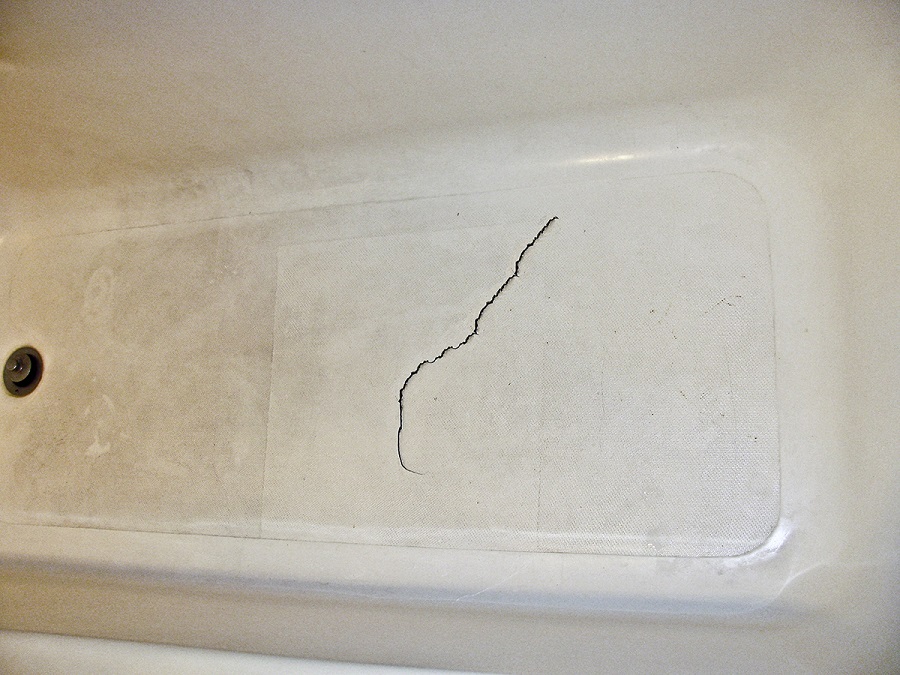
Cracks usually mean that more water and moisture will tract into the inside of your bathtub, causing the integrity to weaken more and more overtime, until eventually the entire bathtub cracks in half. Generally, cracking is commonplace in fiberglass bathtubs.
Though the material is inexpensive, it is highly porous, meaning it will absorb water and it cannot withstand heavy punishment, meaning that fiberglass matches all three criteria for cracks to form.
So how do we fix this problem? Well, though it may be costly in the beginning, investing in higher quality materials early will save you trouble down the road. Stone resin, for example, is very stable and will not bend to any weight placed on it.
Summarily, stone resin can also withstand heavy impacts from objects without chipping or cracks and finally, stone resin bathtubs are 100% non-porous, meaning they will not absorb water nor are abrasive cleaners necessary in their maintenance.
Bathtub cracks can develop for various reasons, from accidental impact to long-term wear and structural issues. Understanding the different types of cracks—how they form, how they evolve, and how to repair them—can help you maintain your tub’s integrity and prevent costly replacements.
Here are the five most common types of bathtub cracks, their causes, their progress over time, and the best ways to prevent and repair them.
A surface-level crack caused by the impact of a heavy object being dropped on the bathtub.
Characteristics:
How They Form:
Stress cracks occur when a heavy object—such as a dropped shampoo bottle, showerhead, or tool—strikes the bathtub surface. This type of crack is most common in acrylic and fiberglass tubs, which are more prone to impact damage than cast iron or stone resin.
How They Evolve:
Initially, stress cracks may seem minor, but they can worsen with repeated water exposure, allowing moisture to seep into the material. This weakens the surrounding area, making the crack more likely to expand. If not repaired quickly, what starts as a cosmetic flaw can turn into a functional issue, leading to leaks.
Prevention & Repair:
To prevent stress cracks, avoid placing or dropping heavy objects in your tub. If a crack does appear, use an acrylic or fiberglass repair kit to patch it before it worsens.
Thin, shallow fractures that develop over time due to repeated pressure and wear on the bathtub material.
Characteristics:
How They Form:
Hairline cracks form due to gradual wear and tear from frequent use, especially in fiberglass or acrylic tubs. They often occur due to repeated pressure in the same spots, such as the areas where you sit or stand. If the tub lacks proper support underneath, the weight of water and a person inside can cause subtle flexing, which leads to tiny fractures.
How They Evolve:
Though they start small, hairline cracks can grow wider and deeper over time as water seeps in, further weakening the structure. Once these cracks penetrate deeper layers, they can compromise the bathtub’s integrity, increasing the risk of water damage or leaks.
Prevention & Repair:
Ensuring your bathtub has proper support underneath can reduce the formation of hairline cracks. If cracks appear, a DIY repair kit designed for your tub’s material can seal them before they worsen.
A network of small, interconnected cracks that form due to excessive pressure on a single point, creating a web-like pattern.
Characteristics:
How They Form:
Spiderweb cracks usually result from excessive pressure on a single point, combined with material aging. This can happen if the bathtub is installed without enough structural support or if the material has naturally degraded over time.
How They Evolve:
These cracks tend to spread outward, forming a complex pattern that weakens a larger area of the tub. Over time, the cracks can deepen, leading to surface flaking and even complete material failure.
Prevention & Repair:
Using a high-quality, reinforced bathtub can help prevent spiderweb cracks. If they appear, a resin-based repair kit can help restore the surface, though larger areas of damage may require professional refinishing.
Deep, sometimes sudden cracks that form due to extreme temperature changes causing rapid expansion and contraction of the material.
Characteristics:
How They Form:
Sudden and extreme temperature changes can cause a bathtub’s material to expand and contract rapidly. For example, filling a cold bathtub with very hot water can create enough thermal stress to crack the surface.
How They Evolve:
Thermal cracks tend to spread quickly, especially if they reach the inner layers of the bathtub material. Once deep enough, they can lead to water leaks and permanent structural damage.
Prevention & Repair:
Avoid pouring extremely hot water directly into a cold tub—start with lukewarm water and gradually increase the temperature. If a thermal crack appears, a professional-grade bathtub refinishing service may be necessary for deeper cracks.
Large, deep cracks that compromise the overall integrity of the bathtub, often caused by poor installation, lack of support, or excessive weight.
Characteristics:
How They Form:
Structural cracks often develop due to an uneven or unsupported installation. If the bathtub is not sitting on a stable foundation, it can flex and bend when weight is applied, eventually leading to deep fractures. These cracks can also result from prolonged exposure to weight beyond what the tub was designed to hold.
How They Evolve:
Unlike stress or hairline cracks, structural cracks do not stay localized. They tend to grow longer and deeper, leading to water seepage that weakens the surrounding material. If left unaddressed, they can cause complete failure, requiring a full bathtub replacement.
Prevention & Repair:
Ensuring a proper and level installation with adequate support underneath the tub is key to preventing structural cracks. If a structural crack appears, replacement is often the best solution, as repair kits may not provide long-term stability.
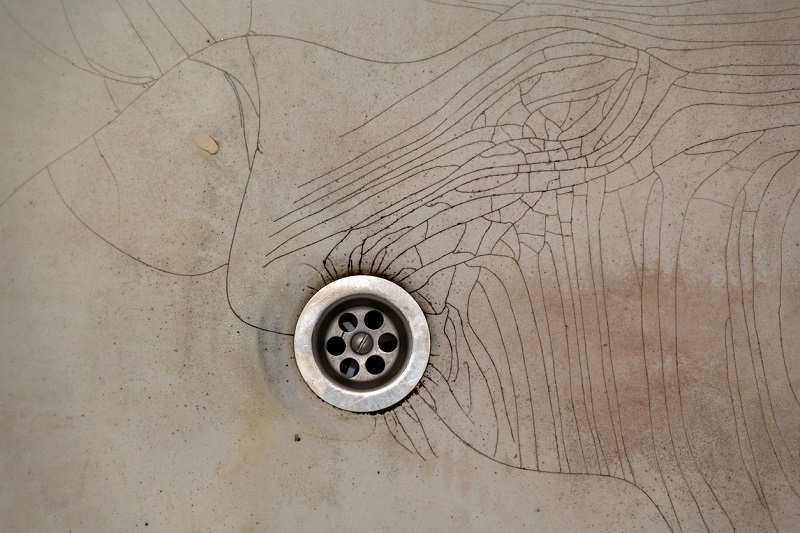
To prevent cracking and maintain longevity in your bathtub, here are the 5 best ways to help avoid cracks
Harsh chemicals and abrasive scrubbers can weaken the bathtub’s surface, leading to cracks over time. Use mild, non-abrasive cleaners and a soft sponge to remove grime without damaging the material.
Extreme shifts in temperature can cause bathtub materials to expand and contract, leading to stress cracks. Always fill your tub with lukewarm water first before adding hotter water to prevent thermal shock.
Even small cracks can worsen if left unattended. Regularly inspect your bathtub for tiny fractures or chips, and use a repair kit to seal them before they expand.
A bathtub that isn’t properly supported can flex and develop cracks over time. Ensure your tub has adequate structural support, especially for freestanding and acrylic models.
Heavy objects like shampoo bottles, showerheads, or even tools during renovations can chip or crack the bathtub surface. Be mindful of what you place in and around your tub to prevent impact damage.
Though it will vary from professional to professional, generally contractors and plumbers will cost anywhere from 80 dollars to 150 dollars an hour depending on their specialties. As you can imagine, this is quite costly for fixing your bathtub.
However, with just a small amount of research and fairly cheap repair kits, many of these cracks can be done yourself for less than 50 dollars.
On average, professional help costs anywhere from 80/hr to 110/hr. The benefits of professional help are two-fold-in addition to assisting with your current problem, they are also a great resource for consultation on future projects along with further advice on proper upkeep. They also come with the added benefit of additional knowledge that will help with installation that might be a bit more complicated for yourself.
Now, here is the tricky part; hiring a trustworthy professional is a bit more complicated than consulting the yellow pages. Though there are plenty of plumbers listed online, be sure to have established quotes from them as well as good reviews along with a plumber license.
In short, these professionals should be able to inform you just how much you are paying them for the job at hand along with an accurate time table.
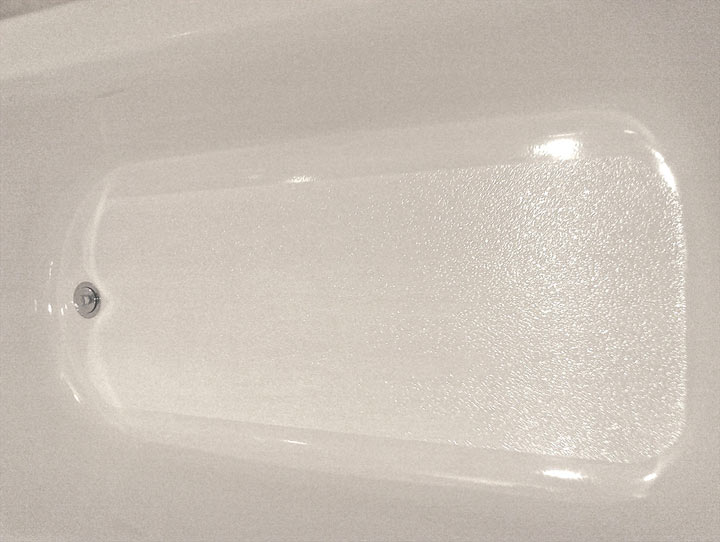
On the market, there are two common repair kits-surface repair kits and internal repair kits. Surface repair kits usually come in the form of a polymer based tape or paint that will seal the crack on the outer surface of your bathtub. Internal repair kits usually are glue or paste that will fill in the cracks from the inside.
Both of these are fairly self-explanatory and inexpensive, usually running on average 30-40 dollars each, providing a cheap and easy alternative to hiring professional help.
1. Halt the Crack -At the end of each crack, drill a ¼ inch hole, this is known as a ‘stop-drill’ hole.

2. Fill the Crack – Using a 2-part polyester filler, mix according to instructions and apply the filler to the crack with a clean rubber spreader until the stop-drill holes and the cracks are completely filled-allow the filler to dry before proceeding.

3. Sand the Filler -Once the filler has dried, sand it down with light sandpaper. Rub lightly until the surface matches with the rest of your bathtub. Once finished, wipe the surface with denatured alcohol to prepare it for spraying.
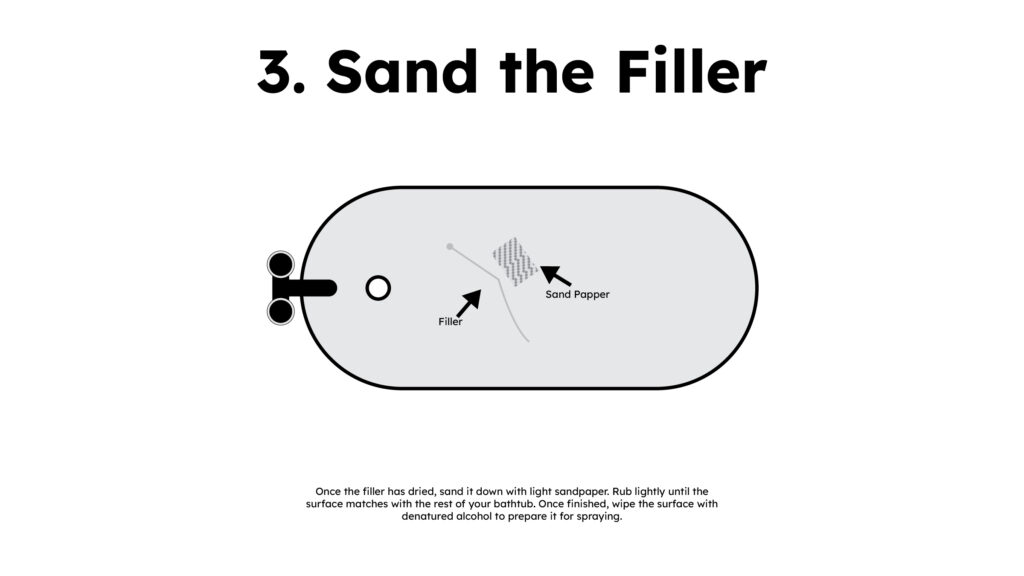
4. Spray the Finish -Using your bathtub repair paint, spray a light coat and allow it to dry before adding more coats as necessary.
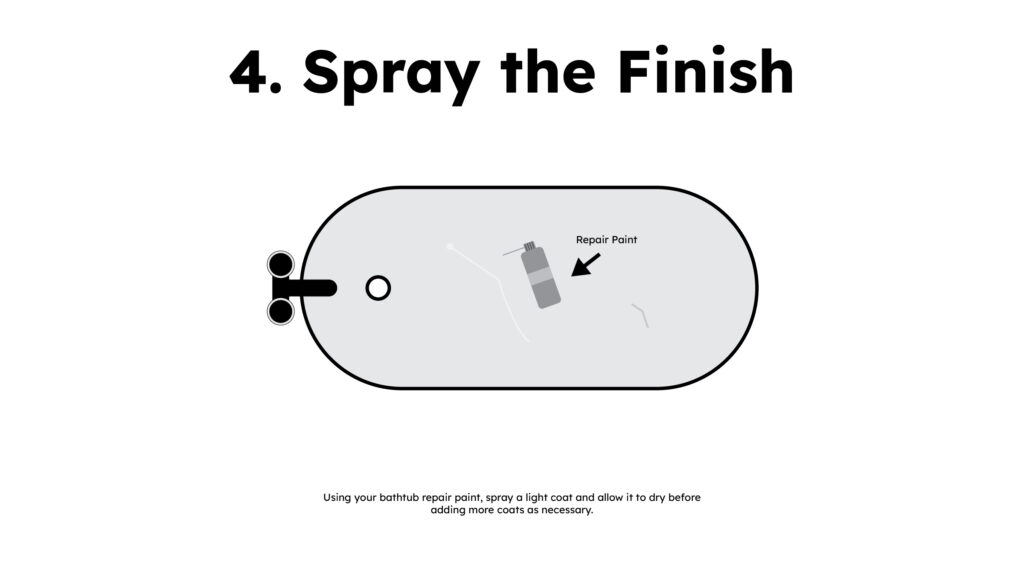
5. Buff the Tub – To finish your tub, you will need an auto polish urethane compound. Apply to give it a harder finish and feather the edges of the paint.
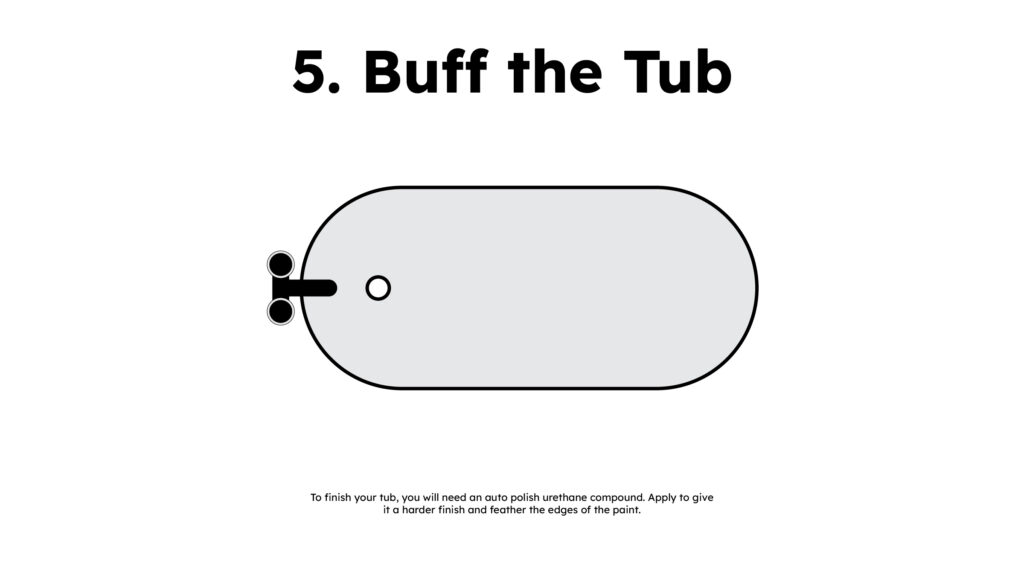
Your bathtub is an essential part of your bath space, especially bathtubs for small spaces. Please make sure to properly maintain it and fix cracks and other blemishes as you see them. Otherwise, you may have a bigger problem looming over you down the road.

Eric is the founder and president of Badeloft USA. He has been the president of Badeloft’s US division for over ten years and oversees all marketing and branding aspects of Badeloftusa.com.
His expertise lies in small business development, sales, and home and bathroom industry trends and information.
Contact us with any business related inquiries.

Free material samples and tub templates

Having trouble finding the right faucet brand for your home? With this comprehensive list, we will look at the most

Reglazing is an excellent way of restoring your old bathtub and making it appear like new. A professional reglaze lasts

So, you’re shopping for a new bathtub and you’ve done your measurements-mapped out the space for installation, but something that

In home design, bathroom privacy often gets overlooked in favor of more glamorous elements like tile choices or statement tubs.
Fill out the form below to request a free material sample
"*" indicates required fields
"*" indicates required fields
"*" indicates required fields
Hello, I received a composite bathtub, and it’s damaged. It’s a dat to fix it? If necesarry, i cand send some photos. Thanks
Hi, my bathtub has a crack, what should I buy to stop crack
Hi- this tub cracked while installing the shower glass door. Can it be fixed and holds the load of shower glass door?
We would recommend contacting a professional to inspect the tub to see if it’s still salvageable.
Can you show a demo on how to repair a plastic bathtub?
I have a cravk in bathtub bit its not fiberglass can i use repair kit?
We filled the tub full during the storm. Would The weight of the water crack the tub??
Can I get kicked out for a Crack in my tub that has already cracked before and he rigged it and now it cracked in the same spot what do I do